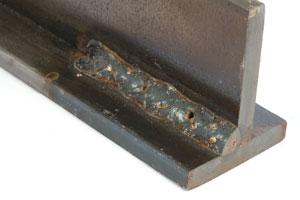Understanding What is Porosity in Welding: Causes and Solutions
Understanding What is Porosity in Welding: Causes and Solutions
Blog Article
Comprehending Porosity in Welding: Discovering Reasons, Impacts, and Prevention Methods
As professionals in the welding industry are well mindful, understanding the causes, results, and prevention methods connected to porosity is critical for achieving durable and trustworthy welds. By delving into the origin triggers of porosity, examining its detrimental effects on weld top quality, and discovering efficient avoidance techniques, welders can boost their knowledge and abilities to create high-grade welds constantly.
Typical Causes of Porosity
Contamination, in the form of dirt, grease, or corrosion on the welding surface, creates gas pockets when heated up, leading to porosity in the weld. Inappropriate securing happens when the securing gas, typically utilized in processes like MIG and TIG welding, is not able to totally secure the molten weld swimming pool from responding with the surrounding air, resulting in gas entrapment and succeeding porosity. Furthermore, insufficient gas coverage, frequently due to wrong flow rates or nozzle positioning, can leave parts of the weld unguarded, permitting porosity to form.
Impacts on Weld Quality
The visibility of porosity in a weld can substantially endanger the overall high quality and integrity of the bonded joint. Porosity within a weld creates voids or tooth cavities that damage the framework, making it much more susceptible to cracking, corrosion, and mechanical failing. These spaces function as stress concentrators, decreasing the load-bearing capability of the weld and enhancing the chance of premature failure under applied stress. On top of that, porosity can additionally act as possible websites for hydrogen entrapment, more aggravating the degradation of the weld's mechanical residential properties.
Additionally, porosity can hinder the effectiveness of non-destructive screening (NDT) strategies, making it challenging to identify various other problems or suspensions within the weld. This can lead to significant safety and security concerns, specifically in important applications where the structural integrity of the bonded elements is extremely important.

Prevention Techniques Introduction
Given the destructive effect of porosity on weld quality, effective avoidance methods are crucial to keeping the structural stability of welded joints. Among the main avoidance techniques is extensive cleaning of the base products before welding. Pollutants such as oil, grease, rust, and wetness can add to porosity, so making certain a tidy work surface area is important. Correct storage space of welding consumables in dry conditions is additionally vital to stop wetness absorption, which can result in gas entrapment during welding. In addition, choosing the appropriate welding parameters, such as voltage, current, and take a trip speed, can assist reduce the threat of porosity formation. Making certain sufficient protecting gas circulation and coverage is one more critical prevention method, as inadequate gas insurance coverage can result in climatic contamination and porosity. Correct welder training and certification are necessary for implementing preventive measures efficiently and consistently. By integrating these prevention strategies right into welding practices, the incident of porosity can be dramatically reduced, leading to stronger and much more Read Full Article reliable bonded joints.
Relevance of Proper Shielding
Correct securing in welding plays a critical duty in stopping climatic contamination and guaranteeing the integrity of bonded joints. Securing gases, such as argon, helium, or a mix of both, are typically made use of to shield the weld pool from responding with components airborne like oxygen and nitrogen. When these responsive elements come into contact with the hot weld swimming pool, they can create porosity, resulting in weak welds with reduced mechanical homes.

Inadequate securing can result in different defects like porosity, spatter, and oxidation, endangering the structural stability of the bonded joint. For that reason, sticking to proper shielding methods is important to produce top notch welds with minimal flaws and ensure the durability and integrity of the welded elements (What is Porosity).
Surveillance and Control Methods
Just how can welders properly keep an eye on and manage the welding procedure to make sure optimal outcomes and stop flaws like porosity? By continually keeping track of these variables, welders can recognize deviations from the ideal conditions and make prompt changes to stop porosity formation.

In addition, executing appropriate training programs for welders is vital for keeping track of and controlling the welding procedure successfully. What is Porosity. Educating welders on the significance of keeping regular specifications, such as proper gas securing and take a trip speed, can aid protect against porosity problems. Normal evaluations try this site and accreditations can also make sure that welders excel in surveillance and managing welding processes
Moreover, the use of automated welding systems can boost tracking and control capacities. These systems can exactly regulate welding specifications, reducing the chance of human error and ensuring constant weld top quality. By integrating innovative tracking modern technologies, training programs, and automated systems, welders can efficiently monitor and manage the welding procedure to lessen porosity issues and attain premium welds.
Verdict

Report this page